Research
Research
- Planning and Coordination Division
- General Services Division
- Technology Services Division
- Dept. of Agricultural Environment
- Dept. of Agricultural Biology
- Dept. of Agro-food Safety and Crop Protection
- Dept. of Agricultural Engineering
- Dept. of Agricultural Biotechnology
- Dept. of Agro-food Resources
- National Agrobiodiversity Center
- Research Paper
Dept. of Agro-Food Resources(농식품자원부)
The Department of Agro-Food Resources is the future-growth R&D hub organization for the world's merchandising of Korea agricultural products.
Korean food, or "hansik", is increasing in popularity over the world due to its healthy properties as well as nutritional value and taste. It offers a very balanced and harmonized diet with various basic ingredients such as rice, meat, fish, and vegetables. Also, the four distinct seasons in Korea make it possible to have developed diverse traditional local regional foods. To globalize Korean food and ingredients, the RDA has set up the 'Department of Korean Food Research for Globalization' at NAS.
The Department of Agro-Food Resources has 3 divisions and promotes fundamental and applied research & development as a national organization for cultivating the agricultural and food industry as the nation's new growth engine.
(1) Food & Nutrition Division
To promote the consumption of domestic agricultural products, we are seeking a scientific basis for food & nutritional quality characteristics and to encourage healthy eating habits.
1. Producing and providing nutritional and functional information on agro-food to the public
To support policies for the management of national nutrition, agro-food supply and demand, and development of the agro-food industry using the Korean food composition table/database, we have released a Korean food composition table every five years as well as a yearly database. In addition, functional composition databases on flavonoids, phenolic acids, and saponin have been released. The nutritional and functional information will be extended and developed through our expert network and this will be the foundation of our data-based research.
2. Establishing a scientific basis for creating a healthy food culture
In order to propose ways to pursue a healthy diet using domestic agricultural products, we are developing scientific dietary information by evaluating agricultural products, diets, and eating patterns via experiments and data analysis. We are also researching ways in which to provide personalized digital dietary information to promote self-directed healthy eating habits.
3. Development of food consumption information to promote consumption of domestic agricultural products.
In order to facilitate sustainable consumption and efficient use of domestic agricultural products, we investigate food sensory characteristics and consumer food preferences and associations. With these results, we develop information to support customized food production and marketing tailored to the consumer's life cycle.
(2) Fermented and Processed Food Science Division
We are developing world-class fermentation processing technology to secure the global competitiveness of our agricultural and food resources. We are doing our best to integrate fermentation microorganisms, develop fermentation processing materials, advance commercialization technologies, expand consumption, and address environmental changes while developing new forms of foodtech.
1. Discovering Useful Microorganisms and Industrializing Seed Germs
Microorganisms are garnering attention as crucial biomaterials for future industries. In particular, the microorganisms involved in the production of fermented foods are essential for improving the quality of such foods. We are working to integrate national fermentation resources by discovering fermentation microorganisms with useful properties in both domestic and foreign fermented foods and building a comprehensive database accordingly. Through this initiative, we are developing indigenous starters suitable for each agri-food item and utilizing them in fermented foods. Through basic research on fermentation microorganisms, we aim to produce high-quality fermented foods and enhance their value.
2. Building a Foundation for the Consumption of Fermented and Processed Agricultural Products
Recently, there has bee increasing consumer demand for naturally derived ingredients and minimally processed foods, such as those with clean labels. To meet this demand, we are discovering alternative materials from traditional foods and natural products, revealing the efficacy of fermented foods, and promoting them to domestic and foreign consumers. Additionally, we are conducting research to establish international food standards for domestic fermented and processed foods in order to facilitate exports.
3. Technology Development for Practical Fermentation and Processing
For the mutual growth of the food industry and the utilization of domestic agricultural products, we are developing technologies for evaluating domestic raw materials used in agro-food products, standardizing manufacturing processes, controlling harmful factors, and ensuring the room temperature distribution of processed grain foods.
4. Responding to Domestic and International Environmental Changes and Developing New Foodtech Technologies
Many environments are changing due to climate change, leading to abnormal fermentation of fermented foods. We are improving quality stability by developing technologies to detect and prevent abnormal fermentation at an early stage. Additionally, we are striving to improve resource efficiency and develop new technologies by enhancing the utilization of various processing by-products, developing alternative proteins, and conducting research into such areas as 3D printing.
(3) Functional Food Division
Pursues value by analyzing the nutritional value & function of agricultural resources, and supporting new growth power of the agricultural food industry by searching for new functionalities & practical uses for materials. We are connecting production and consumption by standardizing the quality of functional raw materials from agricultural and food resources, discovering functional agricultural products, and building a database of efficacy information. We are also working on registering new food ingredients and developing upcycling technologies.
1. Quality standardization of functional raw materials linked to production and consumption
We are analyzing the functional ingredients of domestic agricultural products and setting index ingredients, as well as building a quality management database for functional agricultural products. We are leading the development and commercialization of functional agricultural and food material technology.
2. Quality standardization of functional raw materials linked to production and consumption
We are building a database by discovering functional mechanisms, developing biomarkers, and discovering functional materials for health management by life cycle. We are developing efficacy prediction technology using this database.
3. Quality standardization of functional raw materials linked to production and consumption
We support the registration of new food ingredients for items that are not registered as food ingredients and are working to come up with ways to improve usability. We are conducting research to advance technology to enhance the functional ingredients of agricultural and food resources, exploring the functionality of agricultural and food by-products, and turning them into upcycling functional materials.
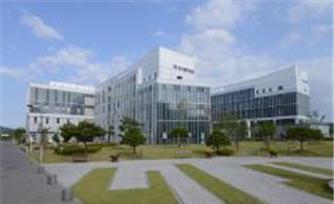
(4) Main achievements of the Food & Nutrition Division
We established and expanded nutritional and functional composition data for agro-food resources to reflect domestic food consumption trends. In 2023, The Korean food composition database 10.1 (DB 10.1) containing data on 130 nutritional components for 3,259 foods was released (266,541 data). The Korean food composition database’s social and economic ripple effects were estimated to be worth 273.5 billion won over 5 years. The work instruction manual for establishing the food composition database was revised and published in Korean and English in 2022. The English version of the work instruction manual was distributed to 13 Asian Food and Agriculture Cooperation Initiative (AFACI) countries, including Cambodia, in accordance with the ‘Establishment of an Asian food composition database’ project. To build databases of functional ingredients, we began producing precise data on anthocyanins, lignans, alkaloids, phospholipids, carotenoids, phytosterols, and dietary sulfur compounds through joint research with 14 organizations ('22~'26). The goal is to secure data on 2,250 foods high in functional ingredients. In addition, the ‘Galactosemia Dietary Guide’ was released for patients with galactosemia, a genetic metabolic disease. It contains safe dietary information and recipes to manage the galactose content of commercial foods and safe eating habits for Koreans who suffer from galactosemia, and was distributed to hospitals designated for rare diseases through collaboration with the Rare Disease Management Division of the Korea Disease Control and Prevention Agency.
In order to establish data-based scientific evidence to support Koreans’ healthy eating habits, we used the National Health and Nutrition Survey data ('16~'20) to investigate the effects of dietary factors (daily food intake, missed meal types, nighttime fasting, and meal times) on the incidence of chronic diseases.
Additionally we have demonstrated experimental methods to evaluate the effect of diets prior to human study. Using an in vitro gastro-intestinal model which simulates human digestion from oral intake to the small intestine, we confirmed the digestion and absorption rate of nutrients in boiled legumes, enabling illustration of the correlation between indigestible starch intake and predicted glycemic index. We also conducted an in vivo study using C. elegans, a type of nematodes, to investigate the anti-inflammatory, antioxidant, and anti-aging activities of herbs and berries grown in different conditions. The results contributed to determination of the harvest time of local agricultural products and the selection of raw materials for commercialization.
To support self-directed dietary management, 'Menugen', a web service from 'Agricultural Food Allbaro', has proposed menus for diverse purposes such as dieting for weight loss and recovery. Recently the service was updated with new a food database added. In addition, food information including salinity, calories, and cooking amounts has been supervised by experts to enhance the health benefits of the recipes.
As a super-aged society status approaches, we are developed serving methods for 14 types of fruits that are frequently consumed by the elderly population, such as apples and peaches. For each fruit, cooking methods and texture expressions were investigated to comply with the three stages of elderly-friendly foods standards (using the teeth, gums, and tongue). These results were published as "Healthy Centenarians! Guide to Serving Fruits for the Elderly" and distributed to elderly facilities such as care centers. In addition, as the proportion of single households consisting of young adults is increasing, we identified dietary problems affecting this group in particular and analyzed their preferences for dietary education. Based on the results, we proposed a need for customized dietary education depending on the socioeconomic backgrounds of young adults-for example, job and income level.
-
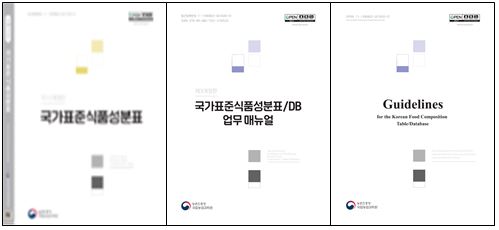 The Korean food composition database
The Korean food composition database
-
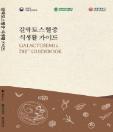 Galactosemia dietary guide
Galactosemia dietary guide
-
 The effects of dietary factors on the incidence of chronic diseases
The effects of dietary factors on the incidence of chronic diseases
-
 Guide to serving fruits for the elderly
Guide to serving fruits for the elderly
(5) Main achievements of the Fermented and Processed Food Science Division
1. Comprehensively characterized useful fermentative microorganisms and seedling resources
- Evaluated characteristics to expand the supply of import substitute fermentation microorganisms and establish a comprehensive information network
- Supported the public service of comprehensive characterization information of indigenous fermentation microorganisms
2. Revitalized the local specialty liquor industry using fermentation microorganisms and local raw materials
- Promoted consumption of local agricultural products by incorporating yeast and brewing core technologies selected by the RDA
- Developed evaluation indicators for scientific quality control of Korean flavors
3. Developed room temperature distribution technology for processed rice foods and supported the spread of commercialization of powdered rice
- Strengthened the distributability of processed rice foods with room temperature distribution technology: refrigeration 1 month → room temperature 8
- Powdered rice (powder) can replace up to 20% of wheat flour in curry and soup
4. Developed new materials for future high-value agricultural products
- Evaluated extrusion molding organizational properties of domestic raw materials for alternative protein materials (12 raw materials)
- Developed food and medicine materialization technology using BT technology (10 types)
- Materialized starch-derived functional polysaccharides through acetic acid fermentation and enzymatic reaction
-
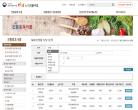 Fermentative microorganism resource information service
Fermentative microorganism resource information service
-
 Revitalizing the local specialty liquor industry
Revitalizing the local specialty liquor industry
-
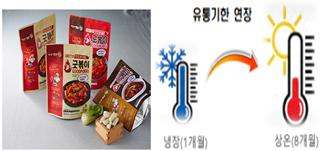 Developed room temperature distribution technology for processed rice foods
Developed room temperature distribution technology for processed rice foods
-
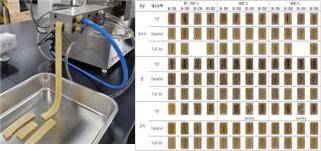 Alternative protein materialization technology using domestic raw materials
Alternative protein materialization technology using domestic raw materials
(6) Main achievements of the Functional Food Division
In order to expand the industrial use of domestic agricultural products, we are performing research on functional ingredient establishment, content analysis, and manufacturing process standardization. We are building a database of functional ingredient content by region for functional agricultural products. We analyzed the functional ingredient content of apples (procyanidin) and mulberries (anthocyanin) in 2021, and persimmon fruit (carotenoid) in 2022 by variety and region.
By linking the efficacy and ingredients of agricultural products, the data have been expanded to enable prediction of functionality based on scientific principles. In addition, active ingredients for each functional material such as those wit antioxidant and anti-obesity properties were listed for 61 items, including apples and oats. Based on the active ingredient database, it is possible to calculate the amount of agricultural product intake for which efficacy can be anticipated. Related information is released at ‘koreanfood.rda.go.kr’.
In order to expand the use of domestic agricultural products and discover new functional materials that reflect consumer needs, we are performing research on the functional evaluation and mechanisms of functional agricultural products, as well as supporting industrialization. We confirmed that Allium Hookeri reduces blood glucose and triglyceride and improves cognitive function, green mustard leaves improve stress, radish improves cardiovascular disease, low-temperature aged garlic improves fatigue, black rice improves bone health and menopausal symptoms, and red balloon-flower has an immune-enhancing effect. In particular, we investigated the various physiological activities of domestic composite functional materials such as Allium Hookeri and balloon-flower and provided support for their industrialization. In recognition of these achievements, this endeavor was selected as one of the top 100 national research and development excellence achievements of 2021. In addition, the efficacy of “Aster yomena” in relieving immune hypersensitivity (improving nasal condition) and the immunity-enhancing effect of “Weissella cibaria JW15” were verified through clinical research and registered as individually approved raw materials for health functional foods. This technology was then transferred to functional food manufacturers in a bid to support industrialization.
We are pursuing the registration of new food ingredients and materialization research to enhance the utilization of domestic agricultural and food resources. We have registered 10 new food ingredients, including Lactic Acid Bacteria Weissella cibaria JW15 from kimchi, immature sword bean pods (Canavalia gladiata), Rudbeckia laciniata var. hortensis (leaf), and Platycodon grandiflorum (buds). In 2022, we proposed registration of asparagus (roots) as a new food ingredient.
In order to establish the foundation for a resource circulation and industrial ecosystem in the field of agricultural and food by-products, we are conducting research in several key areas, including the procurement of raw materials, quality and safety management, materialization technology, and the enhancement of systems for by-product utilization. We developed technology that enhances the drying efficiency of Citrus unshiu pomace as a resource, and we promoted the use as functional materials of ginger leaf (anti-obesity) and Citrus unshiu peel (anti-colitis).
-
 Functional foods and ingredients database
Functional foods and ingredients database
-
 The top 100 national research and development excellence achievements
The top 100 national research and development excellence achievements
-
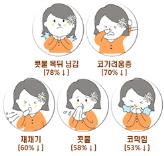 Relieving immune hypersensitivity(improving nasal condition) of Aster yomena
Relieving immune hypersensitivity(improving nasal condition) of Aster yomena
-
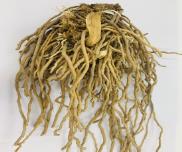 New food ingredient (asparagus root)
New food ingredient (asparagus root)
-
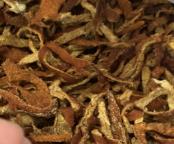 By-product (Citrus unshiu peel)
By-product (Citrus unshiu peel)